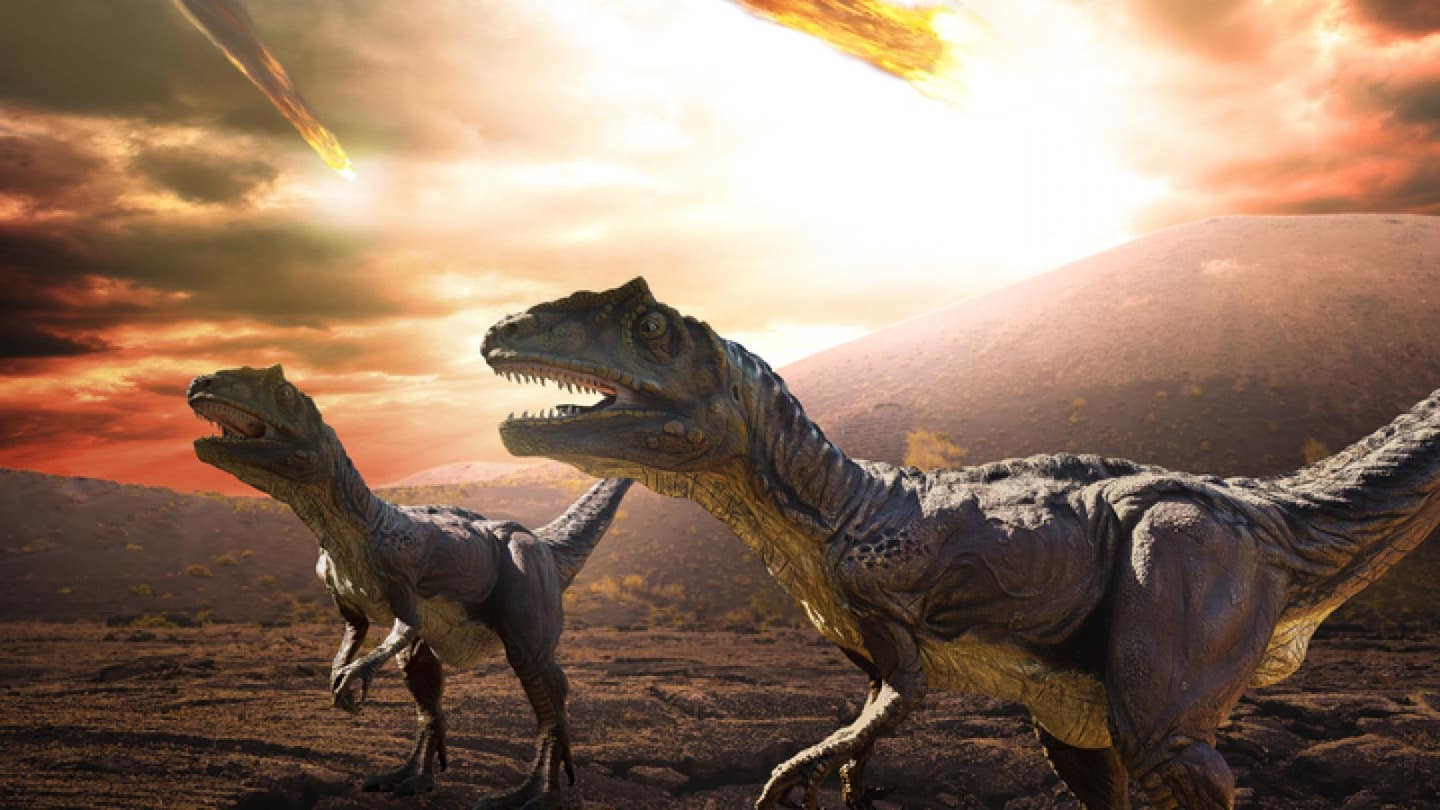Scientists discover piece of the asteroid that killed off the dinosaurs
A fateful day some 66 million years ago, a 7.5-mile-wide space rock slams into Earth, thereby ending the age of the dinosaurs.

[May 16, 2023: Patrick Pester and Katie Hunt]
A fateful day some 66 million years ago, a 7.5-mile-wide (12 kilometer) space rock slams into Earth. (CREDIT: iStock)
A fateful day some 66 million years ago, a 7.5-mile-wide (12 kilometer) space rock slams into Earth, setting off a series of events that ended the age of dinosaurs -- a discovery NASA has described as "mind-blowing."
From the dinosaurs' perspective, it's one of the unluckiest days for life on Earth, and a TV special reconstructs what happened using freshly unearthed evidence.
A tiny fragment of the asteroid may have been found encased in amber. It's one of several astounding finds at a unique fossil site in the Hell Creek Formation in North Dakota that has preserved remnants of the cataclysmic moment that ended the dinosaur era -- a turning point in the history of the planet.
The fossils unearthed there include fish that sucked in debris blasted out during the strike, a turtle impaled with a stick and a leg that might have belonged to a dinosaur that witnessed the asteroid strike.
Related Stories
The story of the discoveries is revealed in a documentary called "Dinosaur Apocalypse," part of NOVA's science series narrated by Sir David Attenborough, and follows paleontologists as they dig up new fossils, and then watch their findings play out with dinosaurs rendered with computer-generated imagery (CGI).
These scenes and the entire program center around discoveries made at a section of the Hell Creek Formation in North Dakota called Tanis, where researchers suspect they've found a mass graveyard of animals killed soon after the asteroid struck. "We're excited to bring viewers along on this journey as scientists excavate this extraordinary dig site," Julia Cort, a NOVA co-executive producer, said in a statement.
"We're able to look over the shoulders of paleontologists uncovering some of the rarest fossils ever found in North America — perhaps in the world — that if confirmed, could help illuminate the most dramatic single day in the history of the planet," Cort added.
Filmed over three years, the special takes a detailed look at the work of Robert DePalma, a doctoral student at the University of Manchester in England, and his team working at Tanis, as the fossil site was known, in 2012.
Tanis is more than 2,000 miles away from the Chicxulub impact crater left by the asteroid that struck off the coast of Mexico, but initial discoveries made at the site convinced DePalma that it provides rare evidence of what led to the end of the dinosaur era.
Tanis - The ancient Egyptian capital. (CREDIT: Einsamer Schütze - CC BY-SA 3.0)
The site is home to thousands of well-preserved fish fossils that DePalma believed were buried alive by sediment displaced as a massive body of water unleashed by the asteroid strike moved up the interior seaway. Unlike tsunamis, which can take hours to reach land after an earthquake at sea, these moving water bodies, known as a seiche, surged out instantaneously after the massive asteroid crashed into the sea.
DePalma's team uncovered more evidence that the fossils at Tanis represent victims of the extinction event that ended the Cretaceous period (about 145 million to 66 million years ago), wiping out about 80% of Earth's animal life. Fossils include a dinosaur leg that looks like it could have been ripped off a Thescelosaurus — a small bipedal dinosaur.
He's certain that the fish died within an hour of the asteroid strike, and not as a result of the massive wildfires or the nuclear winter that came in the days and months that followed. That's because "impact spherules" -- small bits of molten rock thrown up from the crater into space where they crystallized into a glass-like material -- were found lodged in the gills of the fish. Analysis of the fish fossils has also revealed the asteroid hit in spring.
"One piece of evidence after another started stacking up and changing the story. It was a progression of clues like a Sherlock Holmes investigation," DePalma said.
"It gives a moment by moment story of what happens right after impact and you end up getting such a rich resource for scientific investigation."
However, not all experts are convinced that the Thescelosaurus featured in the documentary died on the day the fateful asteroid struck Earth, or they are withholding judgment until all the findings are published in peer-reviewed journals.
For more science stories check out our New Discoveries section at The Brighter Side of News.
Note: Materials provided above by Patrick Pester and Katie Hunt under a Creative Commons license. Content may be edited for style and length.
Like these kind of feel good stories? Get the Brighter Side of News' newsletter.
Joseph Shavit
Head Science News Writer | Communicating Innovation & Discovery
Based in Los Angeles, Joseph Shavit is an accomplished science journalist, head science news writer and co-founder at The Brighter Side of News, where he translates cutting-edge discoveries into compelling stories for a broad audience. With a strong background spanning science, business, product management, media leadership, and entrepreneurship, Joseph brings a unique perspective to science communication. His expertise allows him to uncover the intersection of technological advancements and market potential, shedding light on how groundbreaking research evolves into transformative products and industries.



